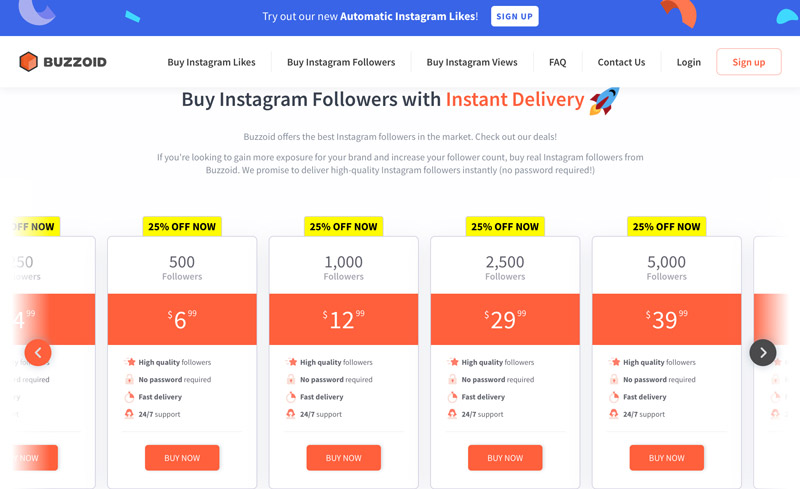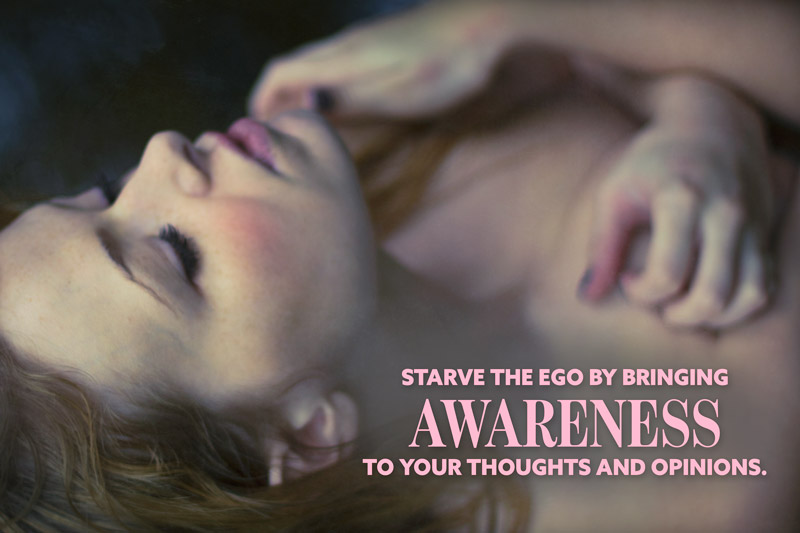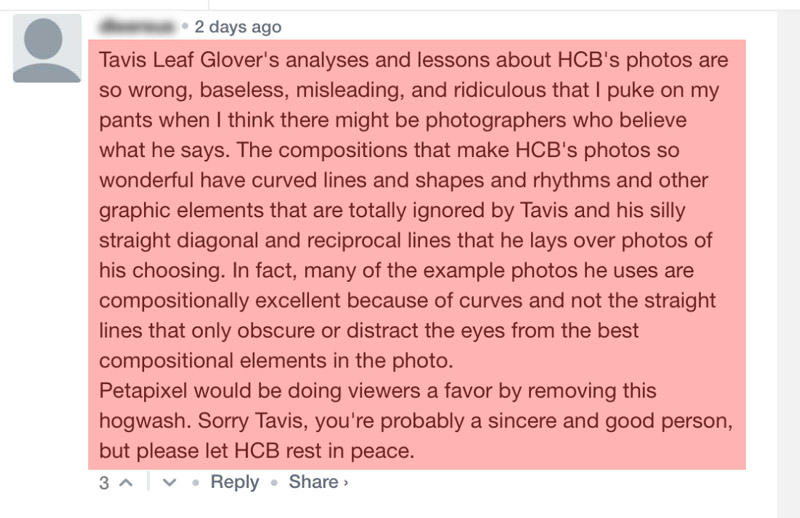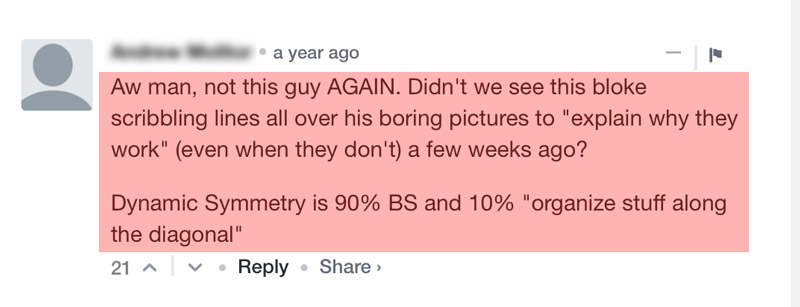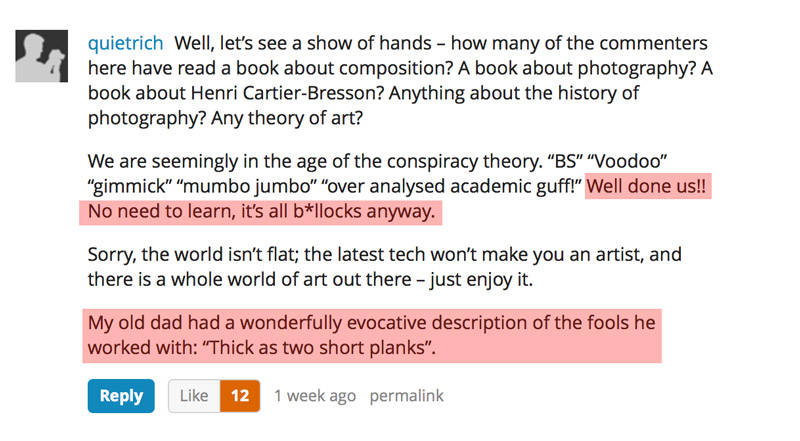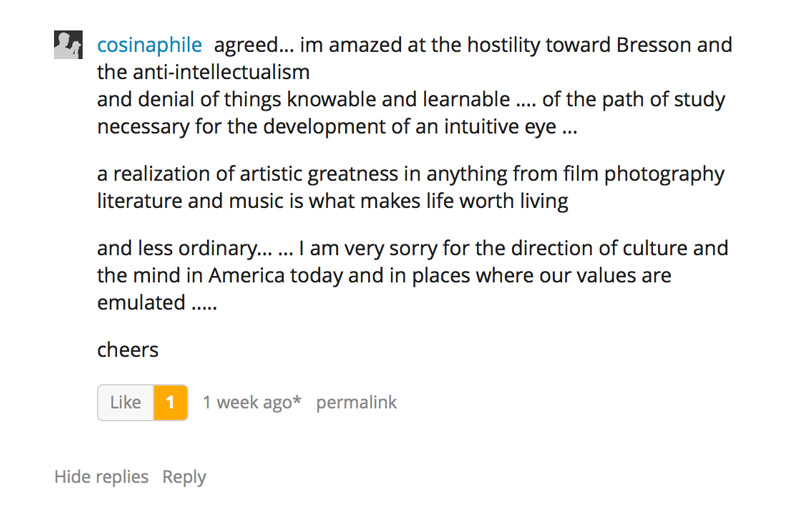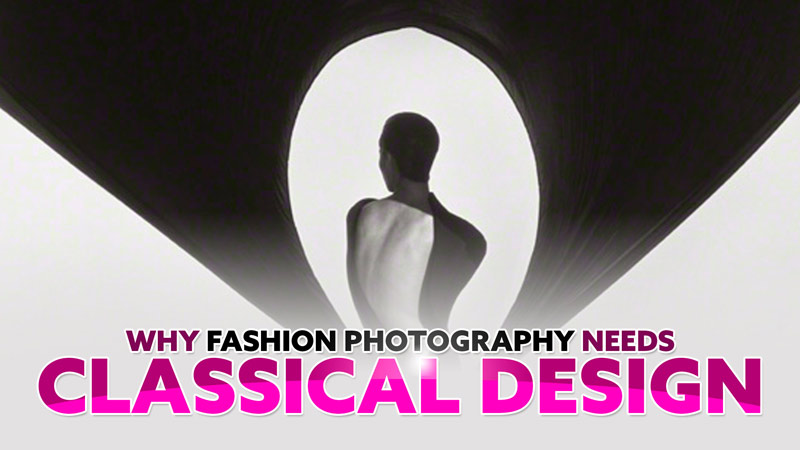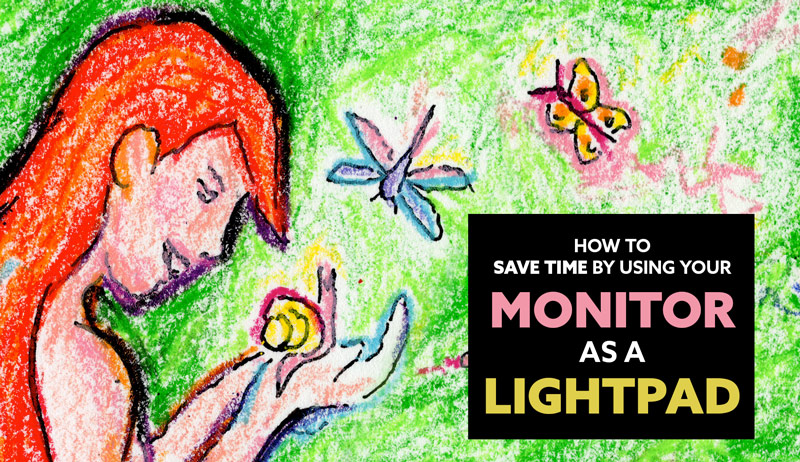The Ego Manifesto for Artists-Quick Guide (PDF Download)

#590
The Ego Manifesto for Artists (PDF Download) (5387 downloads )
Dynamic symmetry, rule of thirds, rude comments; what is right, and who is wrong? To answer these questions and truly benefit your art, you have to determine for yourself. Not me, not your friend from high school; you. How will you do that? Well, it all boils down to the ego. Understanding how the ego works, how it feeds and protects itself, will help us easily identify those who are skeptics, haters, and what we refer to as “trolls.” This way we can be immune to their negative efforts towards diminishing our art or self-worth. Knowledge of the ego will also benefit your life in general. Sometimes it’s hard to understand why people would say what they do, or why they are so skeptical of things that will benefit their lives or art, but we’ll learn soon enough that the answers are found in that three-letter-word; ego.
Sure, I’ve written articles and made comments in videos that are ego-driven. I was uneducated on what the ego was. I had a concept of it, but it goes far deeper than I ever imagined. Now that I understand what the ego is, I’m trying to diminish it every day.
Does the ego control us? I guess you’ll determine your own answer by the end of this article. If by then you’re still not sure, I’ll list some great books as to where I learned all of this information.
In a Nutshell The Ego
The ego is any made-up sense of self, whether positive or negative, that has a wanting or needing desire. It’s your identity. Examples of how the ego shows itself are found in emotional reactions, complaining, getting defensive, passive-aggressive behavior, silent treatment, having to always be right, taking things personally, asking “why do you never believe me,” spreading rumors, playing a victim, falling in love, being shy, stories repeated in the mind, name-calling, projecting, judging, addictions, collective mindsets, social proof, belittling, name-dropping, superiority or inferiority, goals with a means to an end rather than enjoying it in the moment for what it offers, wanting things to fulfill your life, etc. Anything that involves your own opinion is also based on the ego.
The Ego in Action Let's See
Everyone has an ego. Even kids. When a child screams at their sibling and yanks a toy into their arms and holds it tight while yelling, “mine, mine, mine” they are displaying their sense of identity in an object, which develops their ego. Adults might even do this with their big screen TV or their electric cars. If the big screen TV falls and breaks they might be traumatized and feel like their life is over because they related so much of themselves to the TV. Same thing with electric cars. Instead of driving it for their own purposes, they may think to themselves “at least I’m doing something to help the environment, unlike these other destructive gas-guzzling idiot drivers.” They are identifying themselves with a car and judging everyone else. That’s the ego at work, and it’s an unhealthy one at that.

Wanting, Needing and Celebrity Endorsements
Advertisers make ads that will appeal to your ego with celebrities drinking coke, wearing Dre beats headphones, driving Ford pickups, you name it. It’s even in movies, where product placement is used in the same way with actors (i.e. Transformers and Chevy Camaro, Lost in Space TV Series and Oreo cookies). They make ads and use things that will relate to your sense of identity, your ego, to sell more products. It’s a way of manipulating the consumer.
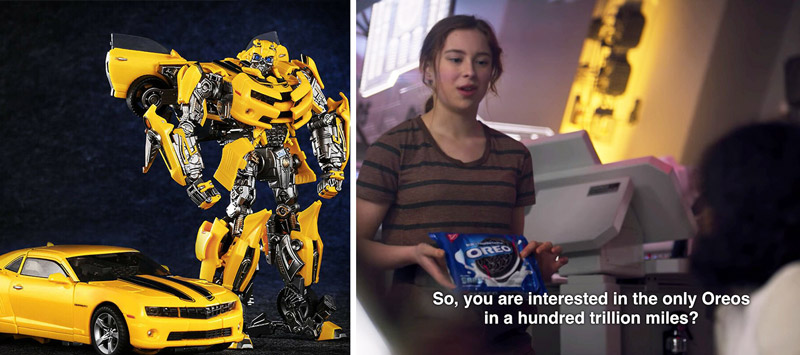
Some people would buy a greasy hamburger at the gym if Tom Cruise was at the counter selling them. Especially if he was claiming them to be great for pre-workout nutrition. Of course, later they would feel like vomiting halfway through their glute-shaping booty-band squats.
Here’s a photo by Annie Leibovitz that demonstrates this type of celebrity endorsement with Angelina Jolie and Louis Vuitton bags. If you buy the bag, you’ll identify more with the false image of the celebrity. She was hired to pose with the bag. It’s not like she was sitting in the serene location and pondering the joys of life when someone captured her image. This was all set up, but this type of manipulation still works on a lot of consumers searching to fulfill their ego and identity.

Unfortunately, buying something to satisfy your sense of identity is short-lived and you have to continually buy in order to feel complete. That’s bad news for any artist wanting to reduce their hours at work so they can create more art.
If someone bought the LV bag to honor its beautiful construction and utility rather than to develop their identity, then that would be an egoless way to enjoy the bag. If someone came up to you and said, “Oh my god, I love your bag,” you shouldn’t get a rush of excitement and boost in your ego, then put your nose in the air and say, “It’s Louis Vuitton, are you kidding me? It cost me $1600, of course you love it.”
Similarly, it’s egoless if you put on a nice cologne or perfume because you enjoy the smell. As long as it’s not because Cindy Crawford wears it or you are trying to turn on the girls at the office. The same goes for enjoying the smell of flowers on your kitchen counter rather than because it will impress your friends during the dinner party.
“When you can no longer feel the life that you are, you’re likely to fill up your life with things.” ~Eckhart Tolle
Most artists are humble. Not Picasso or Modigliani, they are known to fight with each other, boosting their egos. Most artists, though, understand an egoless way to respond to someone complimenting their work. Art might be created with some ego, but typically in the moment of its creation, there is a joy and happiness that goes with it. Therefore, if someone came up to you and said, “Oh, I love your painting,” you might say “thank you, I appreciate that,” instead of “yeh I know its good, probably the best thing this gallery has seen in a long time.”
Are you seeing the difference between healthy and unhealthy egos?
Do you feel inferior if you’re lacking something, or do you own something that makes you feel superior to others? Are you envious because someone has more skills than you? Do you feel distraught if you lose a possession? These are all forms of an unhealthy ego and sense of self.
It doesn’t matter what you do, where you live, what you buy, or how much you consume as long as you’re doing it for your own enjoyment and happiness, and not doing it to strengthen your sense of identity and self-worth. Not involving the ego might seem difficult when buying something like clothing or a condo, but if you bring awareness to these purchases, the ego will slowly be diminished. For example, if you are buying a house and think, “I don’t know about this one, it only has three bedrooms. Jenny’s house has five. Plus I don’t think Suzy would like the green kitchen. Come to think of it, with that small yard we couldn’t throw barbecues anymore and we’d be the laughing stock of the entire neighborhood.”
The ego will protect or boost itself by whatever means possible, so keep an eye out for this. If you catch your ego in action, that’s a good thing because you’re bringing awareness to it. When we get the last word, resort to name-calling, or think someone is full of it and “I’m right, you’re wrong,” this is a way for the ego to repair itself; to feed itself. Diminishing someone’s efforts in a comment on social media is a way to boost the ego. Rather than appreciating a creation for what it offers, the ego in a person will protect itself by lashing out. If this person has low self-worth and doesn’t think they are driven enough to accomplish what you have, then their ego will take over and try to heal itself regardless of how it affects you.
Judging – Creating Stories
When we judge people, we create stories in our heads about who they are and what their life is like. We see a guy with a neck tattoo and might think he’s an ex-con or tattoo artist, but in reality, he’s an actor, is happily married, has two young daughters, donates to charity every month, has coffee dates with his mom every Thursday, and cherishes a simple walk through the park. We can never truly know someone by their appearance alone, this goes for a wealthy businessman or down-and-out homeless person.
Another way to think of this is mind-reading. If you’re creating stories in your head of what someone else is meaning to say rather than trying to find the truth in their spoken words, then you are allowing the ego to control you. Look at the facts, ask clear questions, then discover the truth.

Projecting Our Ego
When we project, it’s like we are throwing a rubber ball at a wall; it always bounces back in our direction. Let’s say someone yells to you “you’re always so needy!” Well, if we bounce that statement back at them and look at the opposite, we’ll identify something that might be a character flaw in them. If they are saying we are too needy, why do they think that? Are they too independent? Can they be more interdependent and show a bit more affection towards us? If someone is arguing with you and says, “you don’t know anything,” does it really mean that they are frustrated because they are lacking the knowledge you have?
If we say to someone, “you’re way too organized,” why do we think that? Does that mean we aren’t organized at all? Is our life severely disorganized? Can we work on gaining a bit more organization? If someone says, “Henri Cartier-Bresson was born a master, that’s why he takes good pictures, not because he studied composition,” does that mean the person saying this has no confidence in their own skills or abilities to learn. They are putting someone up on a pedestal, which is a way of the ego saying “there there, it’s ok, you don’t have to put in any more effort, you weren’t lucky enough to be born a master like him.” Sure Bresson was a master, but to say that he takes good photos because he was born that way is not giving him due credit. It diminishes the skills he learned, along with the relentless practice that occurred to develop his eye.
“[Geometry] Has to be cultivated.” ~Henri Cartier-Bresson

When it comes to someone judging or projecting onto you, usually it will catch you off guard. Ask yourself if there was ego attached to their comment; if their ego benefits from diminishing yours. Most of the time their ego will be intertwined with the comment. If it’s someone close to you, then you’ll definitely be able to tell if they are projecting or being brutally honest. Honesty is a thing to cherish, but it’s hard to come by. Mirror, or bounce back, what the person said towards them and you’ll sometimes learn what they are having an issue with. This is where phrases like “Don’t throw stones if you live in a glasshouse,” or “do unto those as you’d do to yourself.” Or an even more level-headed, open-hearted thing to say is “let him who is without sin, cast the first stone,” meaning that we have all done something bad in one way or another, so we shouldn’t judge. This is portrayed in the painting below by Pieter Bruegel the Elder which is a story of a woman who was caught cheating on her husband and is shown mercy and forgiveness when an angry mob wants to stone her to death for sleeping around.

Dealing with Skeptics – Dig Deeper
Being skeptical is part of the ego as well. Anytime you create stories in your head that haven’t been proven and are based on unknown past experiences, you’re feeding your ego. I get a lot of skeptics that are in disbelief that dynamic symmetry and design techniques will work for their art. Sometimes I scratch my head in amazement, because I know my intentions are pure, but also because the knowledge that will benefit our art is the last thing we should be skeptical of.
It’s curious as to where this skepticism is coming from, but it’s a story these people are telling themselves that puts up a roadblock for any progression. Any story repeated in the mind is part of the ego, like “I’m not good enough, there’s no way that will work, I’m too old, I work too much, I have kids and no time.” All of these are stories so this person and their ego can be content and stay snuggled up and comfortable right where they are. This might feel cozy, but it equals zero progression. The repeated negative stories have a tendency to hypnotize them into stagnancy. Not a good place for any serious artist that wants to create masterful work.
Skeptics should be skeptical of diet food labels with organic, vegan, paleo, keto, or gluten-free written on them, not educational content that will make them a better artist. The food industry knows that “Gluten Free” is perceived by consumers as being healthy, even though it only means that the food doesn’t contain grains like wheat or barley. It’s mainly for people that suffer from Celiac Disease. Have you ever suffered from this disease? If not, why do you still eat gluten-free food? Because it’s a popular diet fad that you heard about? If being overweight and unhealthy is the issue, it’s more beneficial to dig deeper than the labels you see repeated over and over in the local grocery store. For example, here’s a cookie package that is labeled “Gluten-Free.” Did it ever contain wheat? Maybe, maybe not, but they were certain to make that word part of their marketing to have the perception of being healthy. This is where the consumer has to take some initiative if they want to see results in their health or physique. They need to dig deeper and look past the social proof of this popular diet-related word and read the ingredients. We can see on the back of the label that it is 140 calories for two cookies; that’s about 20 minutes of cardio on the elliptical machine. It also has three different types of sugar, milk fat, and butter. Does this seem like a healthy choice for someone struggling with their weight? They even emphasize the word “thin.” Is this to potentially influence a person that lacks the knowledge of proper health, or lacks the time to read the label? Does the consumer unconsciously think they will be thin if they eat the cookies?
Unless we are hiding in a mountainous cave somewhere, away from the internet, TV, Radio, iPods, and shopping centers, this type of manipulation will be used on us every day. Time to become aware of it, then make a conscious decision if you want to eat it, buy it, or learn from it.

If you’re going to be a skeptic, be skeptical of six-pack ab machines or commercials. Proper diet, exercise, and very low body fat will get you six-pack abs, not a machine endorsed by Chuck Norris. It’s extremely difficult to get six-pack abs if you only know how to do a sit-up and know nothing of a proper diet. Photography and painting are equally difficult. If you’re only applying a skill without education, then you’re not maximizing the results you’re striving for.

It’s ok to be skeptical of things if you continually get burned. Like buying eggs, for instance, most of us check to make sure all of the eggs are fresh and without cracks because we’ve had too many bad experiences. We don’t stop eating eggs though! We dig deeper and see what we can find. Just like design techniques and dynamic symmetry and the way it can benefit your art. Sure, be skeptical of these tools, but also be sure to dig deeper and see if there is any truth to it that you’ll benefit from. It’s too irresponsible to have skeptical beliefs and not try to dig deeper and disprove or confirm them.
Most skeptics that I’ve engaged with have not put forth any effort to try and apply dynamic symmetry or the design techniques, and they wonder why they are still skeptical. They want me to make them believe, which we’ll see in an example later.
Social proof is another way the ego uses stories to feed itself. If we see an Instagram, Facebook, or YouTube account with thousands and millions of likes and subscribers, we automatically think that it’s quality content; that we should also be part of. Being influenced by social proof is having a mentality of, “if it’s good enough for them, it’s good enough for me.” It’s a proven way to wrongly manipulate people because these social media influencers know how social proof works. Unfortunately, likes can be bought, so we never really know the truth. That is unless we stop and think for ourselves. Is this image or song remarkable, or is it not? We decide for ourselves, we don’t blindly follow everyone else’s opinion.
Aside from that, if we’re anticipating likes so we can be happy with our art, that is the ego “wanting” again to feel whole. Create the art you wish to create without the likes and comments of others guiding your decisions. That will only leave you feeling trapped and down a road of unhappiness.
The rule of thirds is a great example of how social proof works. So many photographers and artists are taught this beginner method of composition in school and online. Yet, if they stop and ask if it truly benefits their art, they might be surprised how the collective ego could be misleading them. They should ask themselves, “are my compositions remarkable? If not, and I’m applying the rule of thirds and leading lines like everyone else, why are my compositions still mediocre? What is missing here?”
Only when artists start questioning the status quo will they find out for themselves if the majority is correct. In some seriously maniacal cases, as with the Jonestown massacre, a group of people were brainwashed by social proof and voluntarily committed mass suicide by drinking purple Kool-Aid laced with cyanide. They display a mindset of, “they did it, so I might as well too.” Here’s a shocking look at the countless people that fell into the trap of social proof.
The lyrics in music and dialogue in movies can influence your ego as well. Take a phrase from Beyonce’s song “If you like it, then you shoulda put a ring on it.” The lyrics of the song were meant to make single ladies feel good about a breakup. That they can get back at their ex-boyfriend and make him jealous by dancing with another guy at the club. All while telling him if he liked her so much, he should’ve proposed. This, of course, feeds the woman’s ego and makes her feel better, but it’s not a healthy way to deal with communication or relationships. The phrase has made its way into popular culture and is reenforced when women sing it to each other after a breakup. Relationships and commitment go a lot deeper than a phrase from a pop song. Allowing the power of social proof and celebrity to influence a lifelong decision like marriage, or a choice to improve communication skills within a relationship is preparing the ego for a delicious feast upon the next breakup. Perhaps Beyonce could’ve made the song with egoless lyrics like, “If he truly wanted to be with you, then maybe he should’ve put in equal effort to learn how to communicate better.” That isn’t as catchy though.
“There is nothing either good or bad, but thinking makes it so.” William Shakespeare
So, how are you feeling? Some of this brutal honesty can be a slap in the face and hard to stomach, but it has to be brought to your attention if you’re going to avoid these types of things.
Have you determined if your ego is healthy or unhealthy yet?
You can diminish your ego when you bring awareness to it. For instance, if you start thinking, “I’m no good, I always screw things up, bad things always happen to me,” yet you become aware of your negative thoughts as they happen, you shed light on them and they begin to lose their strength.
Since many people aren’t aware of how their ego controls their thoughts and motives, it’s safe to assume that any negative comment towards you is one derived from their ego and not from being fully aware. So if they say, “Your art sucks, you suck, what you know is wrong, you’re an ugly idiot,” it’s safe to assume that it’s a comment made by their ego. What they say is an opinion, their opinion, not a fact. They might be jealous or envious of your successes, or they might be looking for people to “upvote” or “like” their comment to repair their ego, all sorts of things. Some egoists will spend countless hours dumping on and trying to discredit the successes of other people if it means their ego gets a buffet of deliciousness.
We’ll see plenty of examples of this further below. Opinions are put into motion by the ego, therefore your art doesn’t “suck.” I mean, unless you constructed an actual vacuum and it literally sucks. That would be fact, not opinion. There are other times that you do something super nice for someone, like give them a gift or make a pumpkin pie from scratch. Only for them to complain about the pan the pie was baked in. Complaining is a sign of the ego, and their ego-driven comment comes from something inside of them that is unconsciously provoked by your art or gift. Maybe their childhood trauma, maybe they lost their job, maybe their own life is drab and depressing, maybe they tried art and never had luck with it, or maybe they lack motivation. All of these are reasons why they would diminish your achievements to repair their ego.
“Don’t keep searching for the truth, just let go of your opinions.” Buhhda
Looking at Ego-Driven Comments
Now that we know more about the ego and how it feeds itself by means of getting the last word, projecting, judging, and being skeptical, let’s take a look at some comments and see if we can spot the ego or lack of ego in the comment.
When you see long paragraphs that are primarily full of ego (notated in red) the person writing them might be considered a sociopath, a narcissist, or maybe even a psychopath if they were clinically analyzed (definitions below). Knowing how the ego works can really help you identify these people and steer clear of their destructive and negative path. Most trolls and haters of the internet share the same traits as most of us have probably determined. Remember, even some positive comments can have a bit ego because it’s always looking to be fed.
Sociopath: a person with a personality disorder manifesting itself in extreme antisocial attitudes and behavior and a lack of conscience. This person lies, deceives, uses false identities, lacks empathy or remorse, and has aggressive behavior.
Narcissist: an extremely self-centered person who has an exaggerated sense of self-importance. Excessive need for attention and admiration (a desperate need for likes and up-votes), lacks empathy. Has envy of others or a belief that others are envious of them.
Psychopath: a person suffering from a chronic mental disorder with abnormal or violent social behavior. An unstable and aggressive person. Violates the rights of others, lies, manipulates, lacks safety and empathy for others.
The name is blurred out in the negative comments to avoid feeding their ego with more attention. You’ll notice how this first person’s entire comment is full of ego (red), which means they are presenting us with a lot of opinions and not facts. This person (perhaps a sociopath?) resorts to name-calling, the need to feel superior with “I’m right, your wrong” statements, and passive-aggressive sarcasm.
By the way, these are all comments from things I’ve written and posted on other blogs (like PetaPixel), where I try to share knowledge with artists so they can progress with their art.
This one is too easy to spot the ego. We can definitely see the opinionated comment.
More opinions and name-calling in this one. When commenters put quotes around something you’ve written, it attempts to diminish what you’ve said, while simultaneously feeding their ego. It’s like adding salt to their meal; feeding the ego with a little extra flavor. Kind of like if someone says “Yeah, he says they are ‘soul mates’ but I guarantee they’ll both be downloading Tinder and swiping right for someone new in no time.” Unfortunately, even if you don’t let their comment affect you, their ego still gets fed. An emotional response from you will increase their feeding tenfold, so be sure not to energize them. Stay silent or delete the comments if you can, just as you would suck a cockroach into a vacuum cleaner; no crunch, no guts, it just disappears.
This one starts out with opinions backed by the social proof of the rule of thirds, then results in name-calling, uses quotes to diminish, and finishes by creating a story. Isn’t being able to dissect these types of ego-driven comments fascinating?!
In this paragraph, we find one and a half egoless sentences. The rest is full of opinions, and an “I’m right, you’re wrong” sense of superiority. This is the same potential sociopath that we saw in the first example. You’ll see that they use aggressive words like terrible, useless, and pathetically to feed their ego. It was hungry that day, what a feast!
More name-calling and opinions in this one too. Hmm, not very original. They diminish the skill of Henri Cartier-Bresson with skepticism. No facts, all ego. The same goes for the third commenter in this thread. Social media is, in a great way, promoting this type of ego-driven behavior. The fact that there is a like button or upvoting allowed on comments gives these people, typically hiding behind an alias, a platform to express their sociopathic behaviors without consequence. In fact, any like or up-vote they receive on ego-driven comments will reward them, which encourages them to do it again and again.
Here’s an example of judging, as it clearly reads in the comment. Also, a bit of skepticism.
This is a positive comment by “quietrich” that acknowledges how an effort has to be made in order to progress in your art. It also points out the fact that people seem to be more skeptical these days. There is also some ego involved, but at least we are working towards positivity.
This next user “cosinaphile” is really aware of how the ego can make us skeptical and hold us back from higher learning. Whoever it is, they deserve recognition for writing entire paragraphs without ego…something very difficult to do.
Here’s another one by the same user. Excellent display of egoless commenting!
How to Deal with Trolls
If you’d like to learn how I deal with trolls, please check out this video. Yes, using “troll” to describe anyone is name-calling, but it’s a well-known way to describe the ego-driven commenters on the internet.
Real-World Q&A Comments
Here’s some more real-world Q&A type of comments mostly about composition and dynamic symmetry. I try to respond without ego and bring attention to some of the ego-driven statements in their comment. This means I try to separate the situation or facts from my own personal opinion. To write without defensiveness, emotion, or judging. Most troll and hater comments aren’t worth responding to as we saw in the previous examples, but for those that are in a gray area, as seen below, I try to help when I can.
“I’m Skeptical”
Anonymous YouTube Comment 1:
“I hate to sound like a troll, but it really sounds to me like you’re trying to add value and artistic genius to something that is simply a normal shape of a human body.I have that feeling with many of your videos. You point to shapes that could be in any random direction, or ones that aren’t even really there and say that it’s part of some invisible masterplan.Wavy lines are everywhere. Diagonal lines happen too. It doesn’t mean the artist put them there for a reason.I’m really struggling here. I love your videos and I want to believe you, but it really feels to me like a major BS. :/Please help me believe :)”
My Response 1:
“Thanks for watching and sharing your thoughts! Most troll comments don’t end with a smiling face, so you’re good haha! I do sense a bit of skepticism, which is perfectly normal. I was really skeptical when watching Myron Barnstone analyze artwork in his videos and in class. There’s one thing I did to end my skepticism and lead me down an exciting artistic journey. Can you guess what it is? I started analyzing master paintings to try and prove to myself that it wasn’t BS. I will never be able to make anyone believe in anything, it’s ultimately their choice. Some people don’t have that skepticism that you and I have/had, and they are able to see it clearly from the start. I’ll ask you this… Have you analyzed any master paintings on your own for use of dynamic symmetry and design techniques? Have you drawn the human figure? If you’re feeling that there is a wall up in your mind not allowing you to see what I’m conveying in the videos, I would recommend you start analyzing more master paintings and draw more. Usually, when we are skeptical, it’s because we haven’t even tried it for ourselves. It’s like watching someone in a bike race, without ever having ridden a bike and thinking “I don’t see what’s so hard about it, they have 26 gears and the wheels are doing all the work.” Then the skeptic actually rides a bike for the first time in their life and can’t even stay up on the thing. They realize you have to have balance, strength, agility, etc. Only then are they able to clearly see. I Hope that helps steer you in the right direction. Don’t let me tell you what to believe and how to design an image. If you doubt any part of what I’m saying it will benefit you most to dig deeper and see if there’s any truth to it. The first step is to analyze more master paintings. Good luck!”
“Cold Cases”
Anonymous YouTube Comment 2:
“if artists used this why do we not see more pre-painting sketches with the geometry?”
My Response 2:
“How does a detective solve a cold case? It’s not by inexperience. It’s also not by the killer saying “hey, yoo-hoo over here, it was me, I did it with a wrench in the library, at 2 am on Sunday” either. Although that would definitely make life easier. Unfortunately, the detective has to piece things together and gather evidence. After investigating so many cases they develop experience and see reoccurring patterns. They can even use tools like DNA or behavioral forensics to help their discovery. Similarly, if we analyze enough master paintings we’ll start to see reoccurring patterns, and we can use tools like Dynamic symmetry and design techniques to help us uncover the mystery. Sometimes things aren’t handed to us or written in stone, but it doesn’t mean we can’t use a deeper knowledge to discover the truth. Start digging deeper, apply your knowledge, then your question will not be needed. I Hope that helps!”
“Mental Roadblock”
Anonymous YouTube Comment 3:
“cause you don’t want to confuse us”?!?! Man, I’ve been an art teacher for forty years & I’ve never been more confused. LOL I said to myself “I’ll hear this guy out & listen” but, sorry, this is just too tedious, math like, & detail-oriented for 95% of my (adult) students. My admiration to all of you who this works for, however.”
My Response 3:
“Thanks for watching and sharing your thoughts. Sometimes the ego will do things to repair itself when it’s damaged, so I’ll only ask this next question to try and understand further. Were you laughing at yourself for teaching art for forty years and still not using these techniques in your art? I hope not. First, you should never laugh at yourself, and you should give more energy than that to your ability to learn new things which WILL benefit your art.
Not to mention that you’re a teacher, so you could take the time to slowly learn this stuff and help others. It’s not fair to speak for your entire group of students even though you may have their best intentions at hand. It’s impossible to know each individual person and assuming their ability to learn this information is perhaps taking the easy way out. As I was curious about before, the comment seemed to heal a damaged ego and tell me more about you than you may have wanted. That is if any of this is ringing true, free of the egos desire to lash back and heal itself again. I don’t mean to hurt any feelings, especially not yours since you are a fellow teacher, artist, and took the time to try and learn more. My only intention is to help artists use this information so we can change the future of art together. The rule of thirds won’t allow us to do that, and that seems to be all everyone is stuck with.
As one teacher to another, I know you have the knowledge to learn this information and share it in a way that you can communicate it easily to your students. They deserve it. I’ve also got another video that will help you understand the ratios, how the grids can easily be drawn by hand, and how to start with the baroque diagonal. The information is simplified and available for free if you’re truly wanting to learn more. Either way, best of luck!”
Conclusion
Now that you know more about how the ego works, try your best to diminish it whenever you can. This will bring more peace to your thoughts and overall well being. If you’re using your new knowledge of ego to psychoanalyze comments or things that people say to you, that’s great practice. It’s far better than the alternative, where their rude comments or negativity upset you or keep you from creating the art you were meant to share with the world.
If Einstein can remain humble after his great achievements, so can we. Be free of opinions, seek out the truth by digging deeper and asking questions. Don’t be fooled by social proof, celebrity endorsements, or product placement. Bring awareness to your repeated thoughts and any judgments you have, in order to diminish them and gain more control of your life and art. Thanks for joining in, see you next time!
PDF Download
Feel free to download and share this with people and artists you think will enjoy it.
The Ego Manifesto for Artists (PDF Download) (5387 downloads )
Books Referenced for the manifesto:
“A New Earth” by Eckhart Tolle
“Psycho-Cybernetics” by Maxwell Maltz
“Influence” by Robert B. Cialdini
“Pre-Suasion” by Robert B. Cialdini
“Crucial Conversations” by Kerry Patterson


